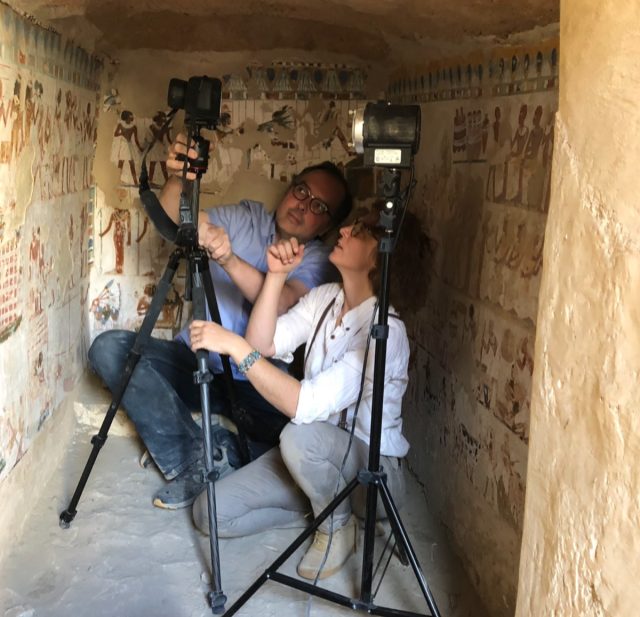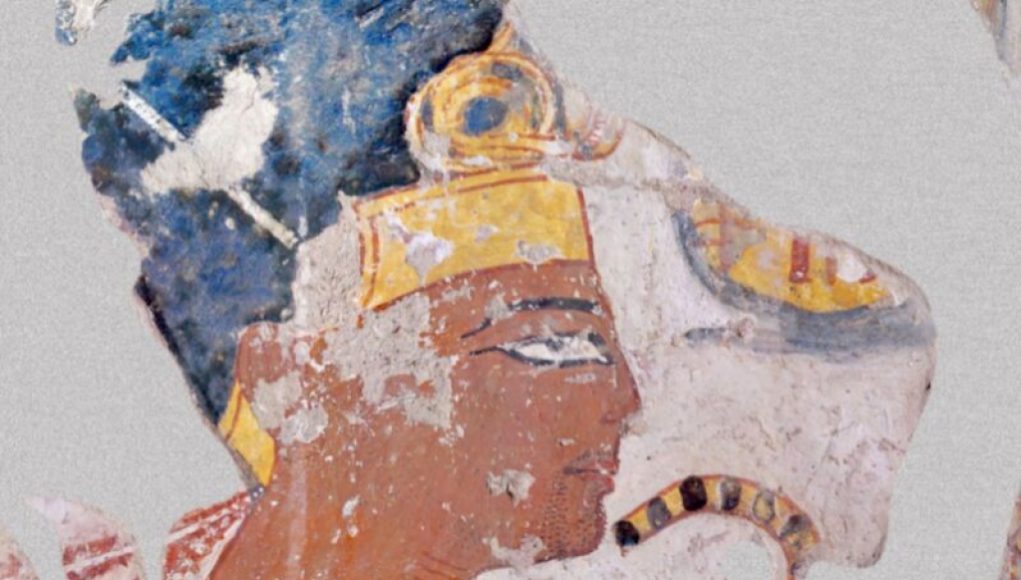Prepare to be amazed by the latest discoveries in ancient Egyptian art! Researchers have uncovered fascinating evidence of earlier versions of two famous paintings found in tomb chapels in the Theban Necropolis. In one painting, a ghostly third hand has been partially hidden under a white overprinted layer, while the other painting shows adjustments to the crown and other royal items in a portrait of Ramesses II. These incredible findings were made possible by a portable macro-X-ray fluorescence (MA-XRF) imaging device, which allowed the researchers to analyze the paintings on site without the need for physical samples.
X-rays have long been used to analyze and restore valuable paintings, thanks to their ability to pass through the artwork without causing any damage. By using X-ray imaging, experts can uncover hidden details and alterations made by the artists. For example, in 1979, Vermeer’s famous painting “Girl Reading a Letter at an Open Window” revealed the image of a Cupid lurking beneath the overpainting. In 2020, scientists used high-energy X-rays to unlock Rembrandt’s secret recipe for his renowned impasto technique, which was thought to be lost to history.
In 2021, another breakthrough occurred when scientists used macro-X-ray fluorescence imaging to map out the distribution of elements in the paint pigments of Jean-Louis David’s portrait of chemist Antoine Lavoisier and his wife Marie-Anne. This technique even revealed the paint used below the surface, creating detailed elemental maps for further study. More recently, researchers used advanced X-ray techniques to study Rembrandt van Rijn’s masterpiece “The Night Watch” and discovered rare traces of a compound called lead formate.
Advertisement
In 2022, Dutch and Belgian scientists employed X-ray imaging techniques to examine the elemental distribution of pigments in a yellow rose featured in Abraham Mignon’s painting “Still Life with Flowers and a Watch.” This investigation aimed to uncover why the rose appeared flattened and monochrome compared to the other blooms in the artwork.

But the surprises don’t end there! In 2022, conservationists analyzing Vincent van Gogh’s “Head of a Peasant Woman” discovered a hidden self-portrait on the back of the canvas. This isn’t the first time a Van Gogh painting has undergone X-ray analysis. In 2008, European scientists used synchrotron radiation to reconstruct the hidden portrait of a peasant woman painted by Van Gogh.
The use of MA-XRF imaging, combined with hyper spectral imaging, has previously shed light on a Greco-Roman painted funerary portrait from the second century CE and revealed remnants of color on marble at Delphi in Greece. Now, this portable MA-XRF imaging device, originally developed for the Delphi studies, is being utilized to study ancient Egyptian paintings as part of a broader project investigating tomb chapels in the Theban Necropolis. These chapels, found in the tombs of high-ranking officials, feature painted murals depicting the deceased in life and their future in the netherworld.
Ancient Egyptian art has always captivated scholars with its distinctive style, and now we have the opportunity to gain deeper insights into the specific pigments and painting techniques used to create these remarkable tomb murals. It is believed that the process involved sketching a preliminary outline in red ochre on a smooth plastered wall, followed by the application of a white or colored background. Additional colors were then layered using various pigment mixtures, and the final outline was primarily drawn with red ochre. Any excess paint was covered with opaque white.
An incredible discovery has been made in the Theban Necropolis, located in the Valley of Kings area in Luxor, Egypt. X-ray scans of sarcophagi made of quartzite revealed ancient Egyptian paintings, believed to be “first drafts,” of hieroglyphic inscriptions from around 3,000 BCE.
The scans were conducted by an international team of researchers from universities in France, Germany, the United States, and Egypt, led by archaeologist Pierre-Julien Gout. The project was funded by the French Ministry of Culture.
The team studied tombs in the necropolis from the Old, Middle, and New Kingdoms. They found a variety of drawings, including depictions of goddesses, humans, and animals. The team was particularly struck by the intricate detail of these scenes, which were preserved due to the nature of the quartzite sarcophagi.
The team’s findings, called “the Art of Morpho-X,” indicate that the Egyptians used a form of primitive drawing to create elaborate images. These “first drafts,” were then hidden beneath layers of decorative paint. The scans allowed the team to peer beneath the painted surface and observe the drafts in their original form.
The intricate details and delicate brushwork found in these drafts provide insight into the artistic practice of Ancient Egypt. It also allows for a greater understanding of the art form, and the creative process behind it.
This discovery is just the latest in a long series of spectacular finds, from artifacts to wall paintings to everyday objects, that help us understand the culture, art, and history of this ancient civilization. The team’s findings will undoubtedly advance our knowledge of Ancient Egypt, and help us uncover even more secrets of the past.




















